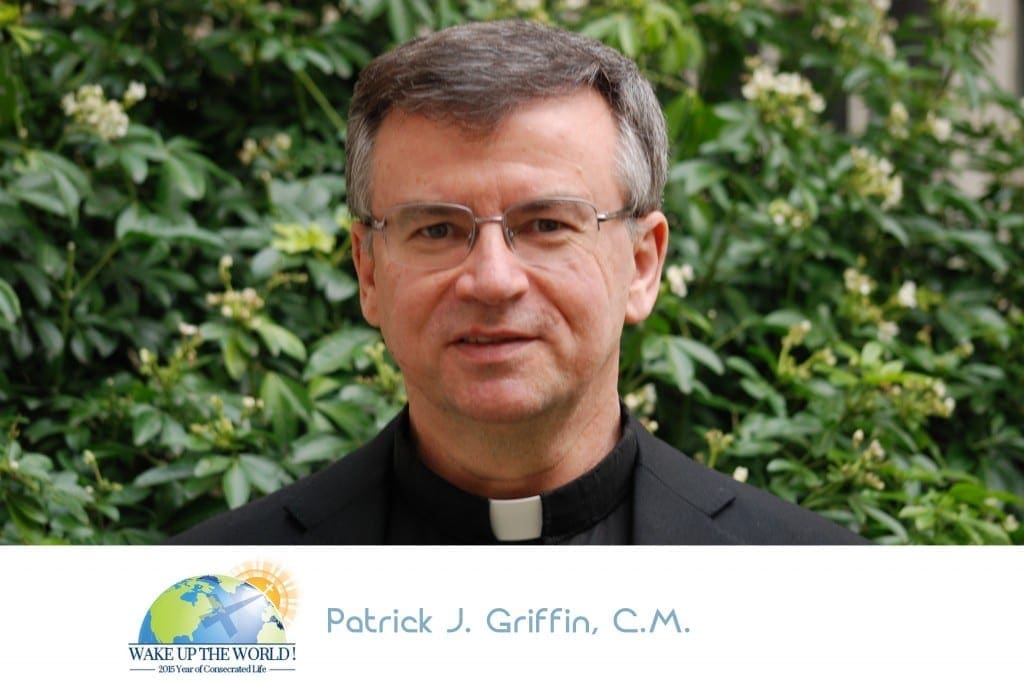 In “Surprised by the Word of God” Father Pat Griffin continues his reflections in the series “Considering Consecrated Life”
In “Surprised by the Word of God” Father Pat Griffin continues his reflections in the series “Considering Consecrated Life”
Twice each week I have the opportunity to be the main celebrant at our daily masses at St. John’s University. Our normal practice involves preaching a very short homily at this Eucharist. I like that expectation. It gives a particular focus to my morning meditation. On one day this week, I did my preparation and went to the pulpit to proclaim the Gospel. As I spoke the Word of God, however, I was surprised to find that I read a passage that I had not anticipated. Yes, these were the verses that I had scanned earlier, and, yes, it was the correct text for the day, but reading it aloud and deliberately, I realized that I had not paid attention to the words. The thrilling part for me was not simply that I had not considered this material correctly, but that I had never heard this passage before! (Perhaps I should be more embarrassed to say that.)
This is how I thought that the text read:
“No one patches an old cloak with a piece of unshrunken cloth, for its fullness pulls away from the cloak and the tear gets worse.”
In Matthew (9:16) and Mark’s (2:21) Gospel, the text proceeds in the above fashion. I have preached on that text many times and was prepared to do so again. But, on the day of my celebration, we read Luke’s Gospel, and this is what I proclaimed (do you already know the difference?):
And [Jesus] also told them a parable. “No one tears a piece from a new cloak to patch an old one. Otherwise, he will tear the new and the piece from it will not match the old cloak.” (Lk 5:36)
The difference between the two texts is not minor. You may well ask how I could have misread one for the other. I will not offer an exegesis of the passages, because that is not my purpose here, but let me point out a few things which make my mishearing of the text worth noting.
In the Matthew/Mark version of this parable, the emphasis falls on the old cloak which receives an unshrunken patch. This addition results in further damage to the old cloak.
In Luke’s rendering, however, the attention falls in two places. First of all, we consider the damage done to the new cloak by cutting a piece out of it. Who does that? Who uses a new garment to repair an old one? Why? What does that mean? And the second place to which Luke draws our eyes is to the match of the new patch on the old cloak. It doesn’t work! Patches on clothing can attain a certain stylish character, but they have traditionally drawn attention to those who are poor. What does the second focus of the parable teach?
At the end of Matthew and Mark’s illustrative image, we have an old cloak with a big hole. At the end of Luke’s presentation, we have a new cloak with a hole and an old cloak with a mismatched repair. Considering the differences between the two versions offers insight into each. The intention of the teaching is not so easily presumed. The first text above has a physical feel for me; the second seems more visual. What do they mean in context?
My point in all this is not to analyze this Word of God—though that is an important task too. Rather, I want to draw attention (again) to the need to listen to God’s word and allow ourselves to be surprised by it. I taught Scripture for many years (and homiletics for a few). One point which I repeated over and over was that one cannot suppose to know the Bible. When we do not listen to a passage as it is read—thinking that we already know how it goes—we do not allow room for God’s Spirit to act in our minds and hearts.
In class, I would sometimes try an exercise which began with all the Bibles being closed. Then, three times, I would invite someone to read the same, familiar, Gospel passage. Following these multiple readings, with all the Bibles put away, I would offer the opportunity for someone to tell that Gospel story. Quoting it word-for-word was neither encouraged nor expected, just indicate the points which develop through the story. Everyone else was to listen, and at the end they were to suggest parts which had been forgotten or over/under emphasized. Then, we would open our Bibles and read the text together carefully. It is an interesting exercise. (It becomes even more instructive with a really mixed group.)
My error in not attending to Luke’s rendering of the parable reminded me of my own need to read and listen to the Word of God with greater discipline and respect. Honestly, I rejoice at the call to learn that lesson once more. As consecrated people, the Scriptures should be precious to us and a constant source of challenge and guidance. That only happens through the gift of the Holy Spirit and an openness to be surprised.





0 Comments